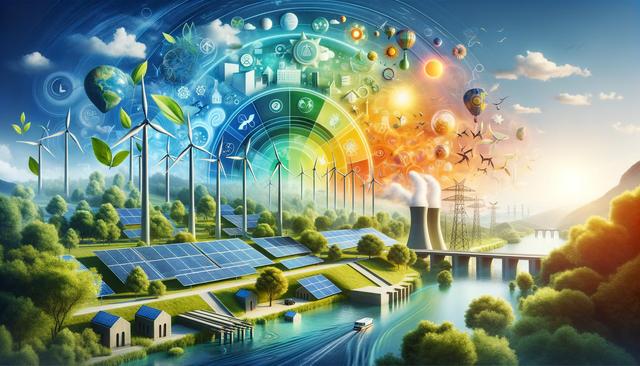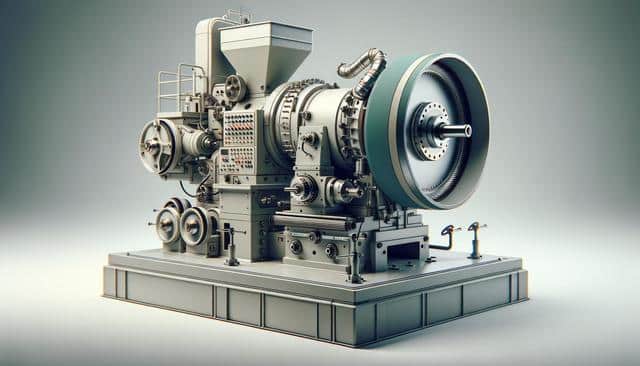
Clean Energy Production Technologies: Growth Drivers and Market Outlook
Global Push Toward Decarbonization
One of the primary forces accelerating the adoption of clean energy production technologies is the global commitment to decarbonization. Governments around the world are adopting ambitious climate policies to meet net-zero emission targets, reinforcing the need for renewable energy sources such as solar, wind, hydropower, and geothermal. These policy-driven efforts are supported by international agreements, including the Paris Agreement, which has prompted nations to invest in sustainable infrastructure and innovation. In addition to governmental mandates, public awareness of climate change and its consequences is encouraging corporations and individuals to adopt greener practices, further stimulating demand for cleaner energy technologies.
Some key policy mechanisms influencing the market include:
- Carbon pricing initiatives and emissions trading systems
- Renewable energy subsidies and tax incentives
- Strict emissions regulations for industries and vehicles
- Public investments in research and development
This regulatory landscape not only promotes the use of existing clean energy technologies but also encourages the development of new solutions that can operate more efficiently and at lower costs. As countries tighten their climate goals, the clean energy sector is expected to witness sustained growth and innovation.
Technological Advancements Driving Innovation
Innovation in clean energy production is playing a pivotal role in making renewable technologies more viable and accessible. Improvements in energy storage, smart grid integration, and digital monitoring are making it possible to overcome longstanding challenges associated with intermittent energy sources. For instance, battery technologies such as lithium-ion and emerging solid-state batteries are becoming increasingly efficient, enabling better storage and distribution of solar and wind power. These advancements are critical for maintaining grid stability and ensuring a reliable power supply even when renewable sources are not actively generating electricity.
Recent breakthroughs include:
- High-efficiency photovoltaic cells with improved output per square meter
- Offshore wind farms equipped with floating turbine platforms
- AI-driven energy management systems for predictive load balancing
- Hydrogen production through electrolysis using renewable energy
These innovations not only enhance performance but also reduce overall costs, making renewable energy more competitive with fossil fuels. The integration of digital technologies ensures smarter energy consumption and better resource management, further contributing to the scalability of clean energy production.
Investment Trends and Market Expansion
Financial investment in clean energy technologies is reaching new heights, driven by both public funding and private sector participation. Venture capital, green bonds, and institutional investments are increasingly directed toward renewable energy projects, energy storage solutions, and carbon capture technologies. The decreasing cost of clean energy infrastructure, particularly solar and wind installations, has made it more attractive for investors seeking long-term, sustainable returns. Moreover, energy companies are diversifying their portfolios to include more renewable assets in response to market demand and regulatory expectations.
Prominent trends in clean energy investment include:
- Growth in corporate power purchase agreements (PPAs) for renewable energy
- Increased funding for clean tech startups
- Infrastructure investments in transmission and distribution systems
- Cross-border collaborations and joint ventures for large-scale projects
These financial inflows are not only spurring innovation but are also creating new employment opportunities in engineering, manufacturing, and project management. As financial institutions align their portfolios with environmental, social, and governance (ESG) goals, clean energy technologies are positioned as a critical area for sustainable growth.
Regional Developments and Emerging Markets
While mature markets in North America and Europe continue to lead clean energy adoption, emerging economies are rapidly scaling up their renewable energy capacities. Asia, Latin America, and parts of Africa are investing in large-scale solar and wind projects to meet growing electricity demand while reducing reliance on imported fossil fuels. These regions offer vast potential due to their natural resources, lower labor costs, and increasing energy needs. Additionally, development banks and international aid organizations are supporting clean energy initiatives through grants and low-interest loans, helping to reduce financial barriers for developing nations.
Notable regional developments include:
- Solar power expansion in Southeast Asia and the Middle East
- Wind energy projects along the coasts of Latin America
- Microgrid installations in rural Sub-Saharan Africa
- Hydropower modernization in Central and South Asia
These regional efforts contribute to a more diversified global energy mix and offer opportunities for technology transfer and workforce development. As grid infrastructure improves and policy frameworks become more favorable, emerging markets are expected to play an increasingly important role in the global clean energy landscape.
Challenges and Future Outlook
Despite the significant progress, the clean energy sector faces several challenges that could impact future growth. These include supply chain disruptions, land use conflicts, and the intermittency of renewable energy sources. Additionally, transitioning away from fossil fuels requires large-scale upgrades to grid infrastructure and energy storage systems to handle decentralized and variable power generation. Political instability or lack of policy continuity in some regions may also hinder long-term investment in clean technologies.
However, the outlook remains positive due to:
- Continued cost reductions across renewable technologies
- Growing consumer preference for sustainable energy sources
- Expanding use of digital tools for energy optimization
- International collaboration on climate goals and technology sharing
Clean energy production technologies are set to become an integral part of the global energy ecosystem. With increased support from both governments and the private sector, the transition toward low-carbon energy sources is expected to accelerate, offering environmental and economic benefits across all regions.
Conclusion: A Strategic Inflection Point for Clean Energy
For stakeholders across the energy value chain—governments, investors, technology providers, and end users—the current momentum in clean energy represents a strategic inflection point. With growing regulatory support, rapid technological innovation, and increasing demand for sustainable alternatives, clean energy production technologies are reshaping the future of energy. While challenges remain, the sector’s long-term potential is substantial, offering meaningful opportunities for those prepared to invest in and adopt green innovations. As the global energy transition unfolds, staying informed and engaged will be key to leveraging the evolving market landscape.


